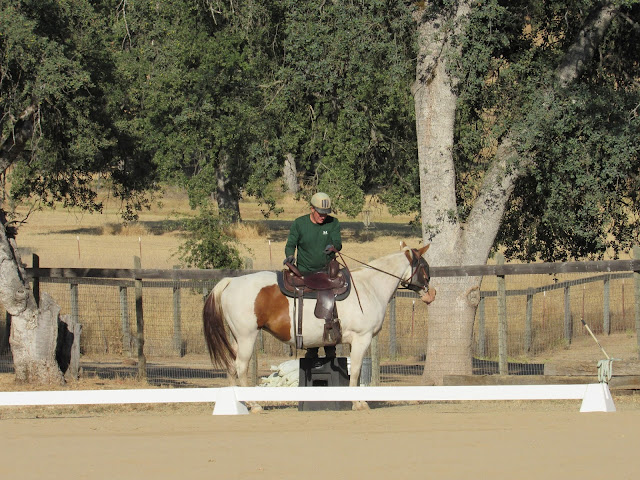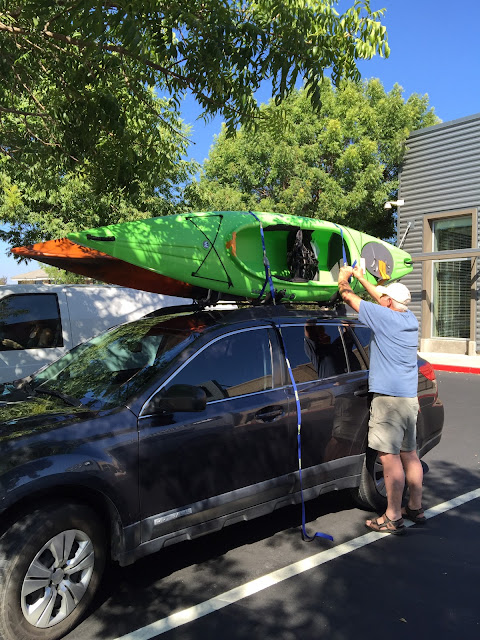Saturday, in preparation for Sandy's visit the next day, I decided to carry a dressage whip while I rode Lucy. I've never had to use a whip with Lucy given how forward she is -- I'm usually asking her to slow down and breathe, for Pete's sake. But, she had been sluggish and reluctant when I rode -- yet prompt and willing to canter on the lunge. I suspected she had my number -- or thought she did, anyway. Lucy was full of energy in the much cooler day Saturday -- she was no longer in heat and we had dark clouds with a breeze over the arena instead of blazing sun. I carried the whip, but I didn't need it. The first time I asked for right lead canter she went hollow in her back, threw her head in the air, and refused.
We circled, got a nice trot going in a relaxed frame and I whispered "Lucy, if you don't go I'm going to have to tap you with the whip." She went. After three or four strides she tried to come back to trot. "No, no, Lucy. You don't get to pick where we transition back to trot. That's my job." I gave her a reinforcing squeeze with my calf and we continued on.
Sunday morning, Sandy and Joe pulled up the driveway just as I was finishing up Lucy's grooming. Lucy looked over at Sandy and licked her lips. I guess she was already anticipating and practicing saying "Yes, ma'am."
Sandy and Lucy marched into the arena. Brett said "Boy, she sure looks different with Sandy on her." --- yeah, marching and straight and all about "yes, ma'am."
This is why Sandy is a successful professional dressage trainer and why I'm a bumbling amateur.
 |
| Just look at that lovely stretching trot |
We had time for me to ride a bit as well before lunch so I got a short lesson.
1. When Lucy resists the contact, don't use my hands. It just makes her claustrophobic. Instead, use my legs and seat to push her forward into the contact. (Oh, I said, a receiving hand instead of a restraining hand -- I've read about that).
2. Make sure I ride with relaxed shoulders and heavy arms. Only touch Lucy's mouth with ring finger contact. Regulate her racing around with my seat and weight.
3. Get the timing right on canter transitions. I've been told, and have read, a hundred times to sit two steps before asking for canter. I always thought it was so me, the rider, could get organized and ready and so I didn't worry to much if it was two strides, or three, or five. I asked when I was ready. As a result, I often asked when the wrong leg was in contact with the ground - causing confusion and delay and hollowed back and head in the air behavior. Me getting the timing right was hit and miss. Oops. Now I understand that if you are posting on the correct diagonal, sit precisely two steps, and ask - you will have the timing correct. And Lucy will smile and give you a lovely canter transition.
4. Lucy would like me to tell Sandy "Thank you very much. My rider gives awesome neck rubs but she can be kind of dense when she's in the saddle."
 |
| Lucy, I may be a bit slow learning some things, but I love you to death. |






















































